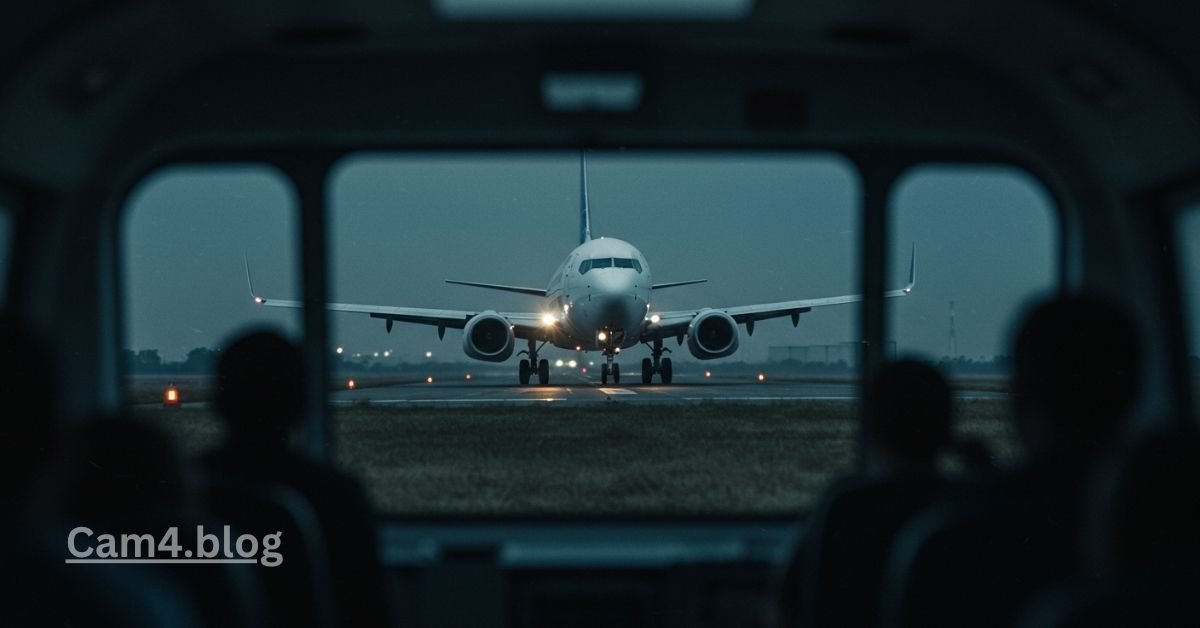Introduction to United Airlines Flight UA770
Traveling by air can be an exhilarating experience, filled with excitement and anticipation. However, when unexpected events disrupt your journey, the thrill can quickly turn into a whirlwind of emotions. That’s exactly what happened on United Airlines trip UA770—a normal trip that turned into an emergency. What began as a typical takeoff soon spiraled into a series of dramatic moments that left passengers gripping their armrests in anxiety. In this post, we’ll delve deep into what happened on UA770, exploring the timeline of events and the reasons behind its emergency diversion. Join us as we navigate through this extraordinary incident and uncover the lessons learned along the way.
Timeline of Events
United Airlines Flight UA770 took off from Denver International Airport, heading for Orlando. It was a typical day in the skies, with passengers settling in for a long flight.
Shortly after departure, things took an unexpected turn. The aircraft’s crew reported unusual readings from one of the engines. This prompted immediate action.
Within minutes, the pilots communicated with air traffic control. They asked to go back to Denver and declared an emergency. Passengers felt a shift in atmosphere as people started to sense something wasn’t right.
The plane circled back while maintaining altitude until they were cleared to land. Ground crews prepared for their arrival at the airport runway.
Emergency personnel were waiting just outside the terminal doors after the safe landing. Tension faded as everyone stepped off the aircraft and breathed a sigh of relief amidst uncertainty about what had transpired during those critical moments.
Reasons for the Emergency Diversion
United Airlines Flight UA770 faced an unexpected emergency diversion due to a technical issue mid-flight. Reports indicated that pilots detected irregularities in the aircraft’s systems, prompting immediate action.
The crew conducted a thorough assessment and prioritized passenger safety above all else. Communication with air traffic control was swift and efficient as they relayed their situation.
Additionally, weather conditions played a role in the decision-making process. Turbulent skies ahead posed further risks that could exacerbate any existing mechanical problems.
Passengers were informed about the situation clearly but calmly, easing fears while ensuring transparency. The crew’s training kicked into high gear, demonstrating professionalism amidst uncertainty.
It was a combination of technical anomalies and external factors that led to this unplanned landing—an essential choice for safeguarding everyone on board.
Passengers’ Experience and Responses
There was a mixture of interest and worry in the cabin when United Airlines Flight UA770 made its sudden detour. Passengers exchanged glances, their expressions reflecting uncertainty about what was unfolding.
Many passengers took to social media to document their experiences. Posts flooded platforms like Twitter and Instagram, where updates quickly spread among friends and family. Some shared photos of the flight attendants working diligently amidst the chaos.
Conversations buzzed throughout the aisles. Some travelers expressed frustration over disrupted plans while others remained calm, reassuring those around them. Strangers became allies in an unusual situation.
Flight crew members displayed remarkable professionalism amid rising tensions. They communicated clearly and ensured that everyone felt safe despite the circumstances.
After landing safely, relief washed over most passengers as they disembarked at an unplanned airport stop. While inconvenienced by delays, many were grateful for their well-being above all else—an experience that highlighted resilience in uncertain times.
Safety Measures and Protocols During an Emergency Diversion
During an emergency diversion, safety is the top priority for airlines. United Airlines follows strict protocols to ensure passenger well-being.
Flight attendants are trained extensively in emergency procedures. They conduct safety briefings that cover what to expect during a diversion. Clear communication is essential throughout the process.
The cockpit crew also plays a crucial role. Pilots assess the situation quickly and communicate with air traffic control regarding alternate landing options. Their training allows them to manage various scenarios efficiently.
Onboard, passengers receive instruction on how to brace for impact if necessary. Safety demonstrations include using seat belts properly and identifying exits.
Airlines often have medical personnel onboard who can assist in emergencies. This additional support helps address any immediate health concerns during the stressful situation of a diversion.
Every detail matters when lives are at stake, showcasing the airline’s commitment to maintaining high safety standards even under pressure.
Repercussions and Outcomes of the Incident
The aviation community was rocked by United Airlines Flight UA770’s emergency detour. Passengers were understandably shaken, leading to widespread discussions about air travel safety.
Airline management faced scrutiny from both media and regulatory bodies. Questions arose regarding crew training and preparedness for unexpected situations.
In the aftermath, United Airlines committed to enhancing their emergency protocols. They initiated comprehensive reviews of procedures and invested in further training for flight crews.
Passengers impacted by the incident received support from the airline, including counseling services and compensation for inconveniences caused during the diversion. Many expressed gratitude for how quickly staff responded under pressure.
This incident also sparked broader conversations among travelers about trust in airlines’ ability to ensure passenger safety during crises. The event served as a reminder that even routine flights can take unexpected turns, reinforcing vigilance across all airlines involved in commercial travel.
Lessons Learned from United Airlines Flight UA770
The incident involving United Airlines Flight UA770 serves as a crucial case study for the aviation industry. It highlights the importance of effective communication among crew members and between pilots and air traffic control.
Passengers learned about staying calm during emergencies. Many reported feeling reassured by the professionalism displayed by flight attendants. This experience reinforced that training is vital in managing passenger anxiety during unexpected situations.
Airlines can also gain insights into operational protocols. Reviewing diversion procedures helps ensure swift responses to similar incidents in the future.
This event emphasizes passenger safety as a top priority. The need for regular drills and updated emergency response plans cannot be overstated. Each flight presents unique challenges, and preparedness can make all the difference when it matters most.
Conclusion
The incident involving United Airlines Flight UA770 highlights the unpredictability of air travel. Emergencies can arise without warning, and how they are managed makes all the difference.
Passengers faced a stressful and uncertain situation. Their reactions varied from anxiety to relief as they navigated this unexpected turn of events. The response from the crew exemplified professionalism under pressure, ensuring safety remained paramount.
Safety protocols were put into action swiftly. Every detail—from communication with air traffic control to passenger instructions—was crucial in guiding everyone through a challenging experience. The importance of these measures cannot be overstated; they serve not only to protect lives but also to maintain trust in airline operations.
As investigations unfold, there will undoubtedly be discussions about potential improvements within emergency procedures across airlines. Learning from incidents like this is essential for enhancing future responses and preventing similar occurrences.
United Airlines Flight UA770 serves as a reminder that while flying is one of the safest modes of transportation, challenges can emerge unexpectedly. Understanding both the processes involved in an emergency diversion and how passengers cope is vital for anyone who travels by air regularly or occasionally.


